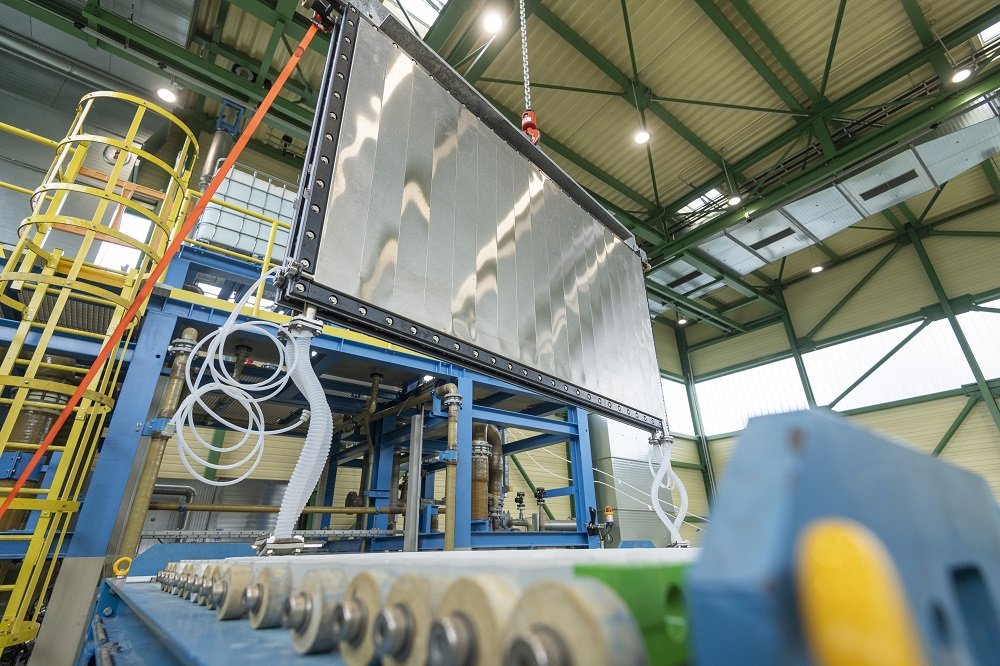From pv magazine Global | via the Hydrogen Stream
Brazilian chemical company Unigel started the construction of a green hydrogen plant in Bahia, in northeastern Brazil. The company said the facility will be the country’s first hydrogen plant and the world’s largest integrated green hydrogen and ammonia plant. “Located in the Camaçari Industrial Complex (BA), the new plant will have an initial production capacity of 10,000 tons/year of green hydrogen and 60,000 tons/year of green ammonia,” the company said in a statement. The US$120 million (€117.6) project should begin commercial operations by the end of 2023. The facility will rely on technology provided by Germany-based thyssenkrupp nucera. “By 2025, the company expects to increase fourfold the production capacity of green hydrogen and green ammonia,” Unigel said. “In the first phase of the project, Unigel installs three 20 MW standard electrolyzers from thyssenkrupp nucera, adding up to a total capacity of 60 MW,” the German company stated in its own press release.
The Environment Minister of the German region of Lower Saxony, Olaf Lies, approved €2.3 million in funding for a hydrogen pilot project planned by German energy company Uniper at the Krummhoern natural gas storage site. “It has long been clear that the energy transition cannot be achieved with electrons alone. Hydrogen will be a central element for the success of the energy transition. We need it to become independent of fossil fuels and to decarbonize our energy sector and industry,” Lies said. Uniper will test the new salt cavern specifically built for hydrogen storage on a large scale and in a real-world environment at the natural gas storage facility in Krummhoern, Northern Germany, which has not been used since 2017. The company will also build a new cavern using an existing well. “The storage facility will be one of the first of its kind and is scheduled to start operating by 2024,” said Uniper. The storage capacity should reach up to 250,000 cubic meters.

A US-Belgian research team has developed a new type of catalyst for fuel cells, adding a molecule to the traditional nitrogen-coordinated iron catalyst. “Adding a fifth ligand – four nitrogens plus another one – can lead to a much more stable and robust electrocatalyst,” the researchers said. The team tested three options for the fifth ligand: azanide (NH2-); hydroxide (OH-); and sulfate (SO42-). According to the study, the fifth ligand also improves the durability of the catalyst. “It appears that this fifth ligand manages to keep the iron in the plane of the iron-nitrogen when oxygen is added into this structure.” The team used computational chemistry techniques to test the new catalysts, such as X-ray emission spectroscopy and Mössbauer spectroscopy. The study “Identification of a Robust and Durable FeN4Cx Catalyst for ORR in PEM Fuel Cells and the Role of the Fifth Ligand” was published in ACS Catalysis.
Solar energy and onshore wind are crucial to unlocking Africa’s hydrogen potential, the International Energy Agency (IEA) said in its Africa Energy Outlook 2022. “With further cost declines, Africa has the potential to produce 5 000 megatonnes of hydrogen per year at less than US$2 per kilogram,” reads the report. The continent has 60% of the world’s best solar resources, but only 1% of its operational solar generation capacity.
Serbia and Hungary signed a memorandum of understanding to collaborate on renewable hydrogen. “The signed memorandum is the basis for exchanging documents in this area and discussing potential joint projects,” said the Serbian government.
Air Products announced it will also spend or commit at least US$4 billion in additional new capital for the transition to clean energy over the next five years, bringing its total commitment to first-mover projects to US$15 billion through 2027. “We continue to see significant opportunities for hydrogen and carbon capture technologies, and our industry-leading US$15 billion capital commitment is further demonstration of sustainability being at the heart of our business and growth,” Seifi Ghasemi, Air Products Chairman, commented.
This content is protected by copyright and may not be reused. If you want to cooperate with us and would like to reuse some of our content, please contact: editors@pv-magazine.com.








By submitting this form you agree to pv magazine using your data for the purposes of publishing your comment.
Your personal data will only be disclosed or otherwise transmitted to third parties for the purposes of spam filtering or if this is necessary for technical maintenance of the website. Any other transfer to third parties will not take place unless this is justified on the basis of applicable data protection regulations or if pv magazine is legally obliged to do so.
You may revoke this consent at any time with effect for the future, in which case your personal data will be deleted immediately. Otherwise, your data will be deleted if pv magazine has processed your request or the purpose of data storage is fulfilled.
Further information on data privacy can be found in our Data Protection Policy.